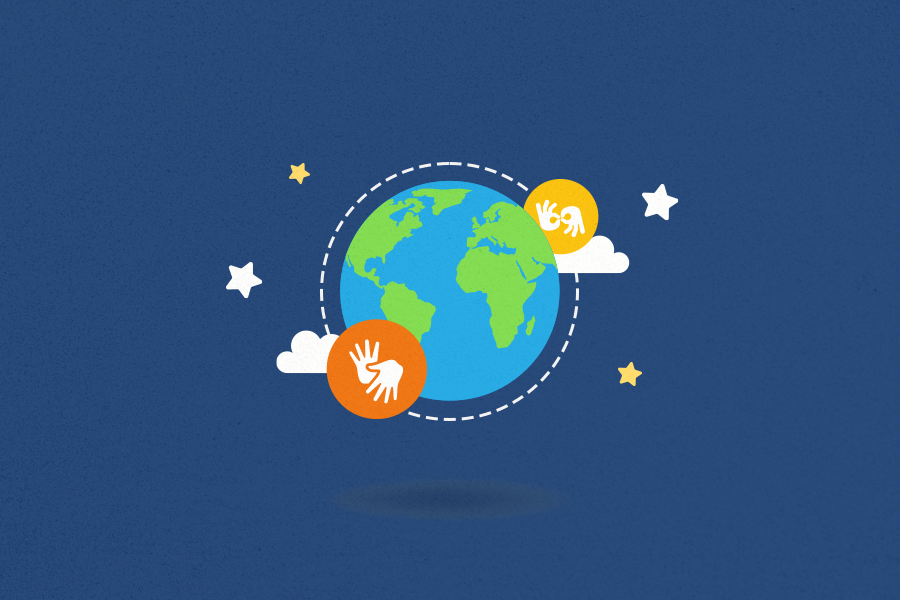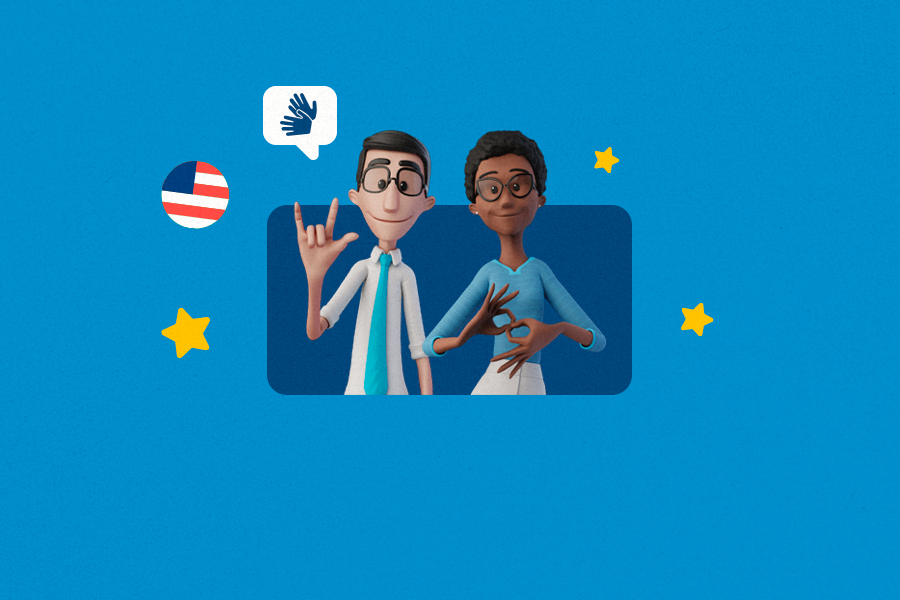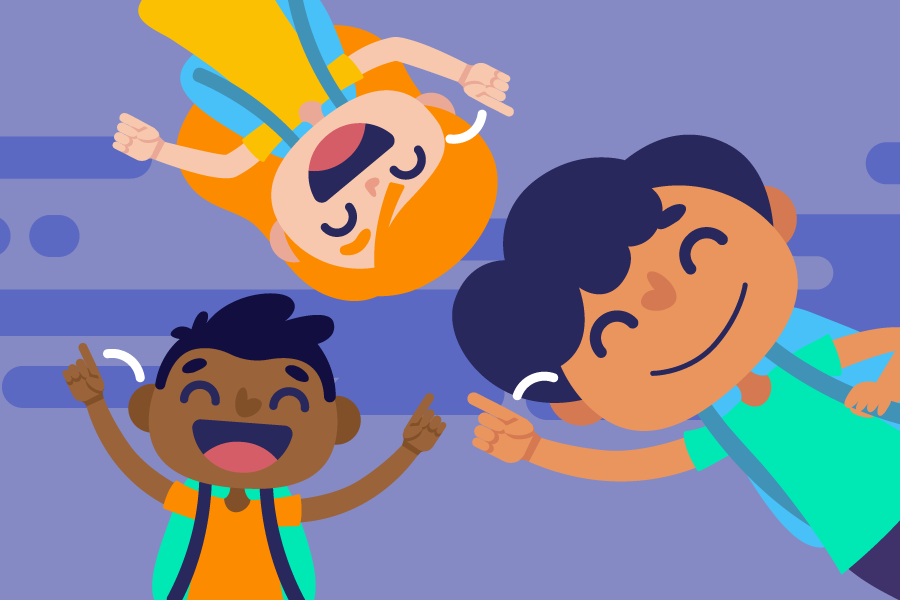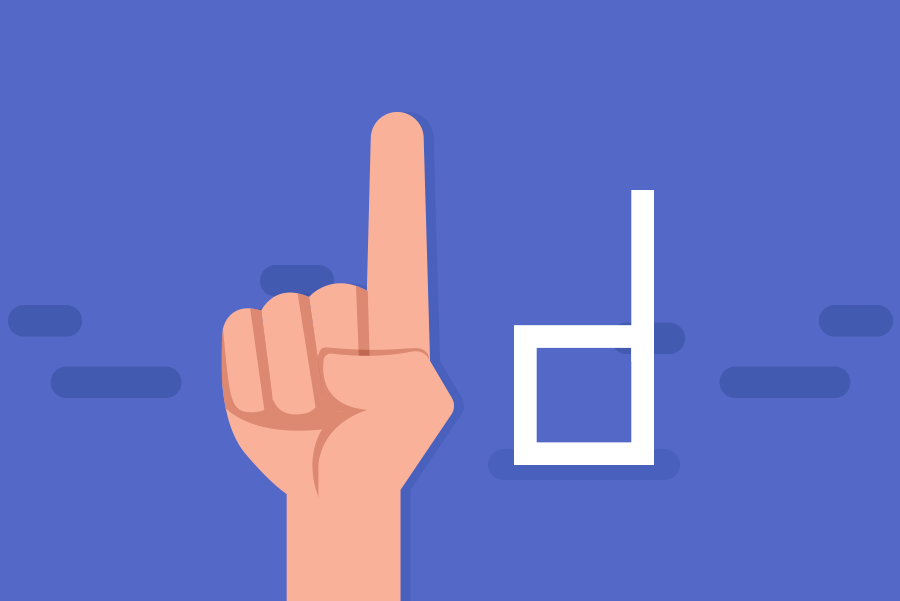
Sign Languages unite us

In December 2017, the General Assembly of the United Nations (UN) officially defined September 23rd as the International Day of Sign Languages, attending a request of the World Federation of the Deaf (WFD). The choice of this day is a tribute to the date that the WFD was created in 1951. It marks the birth of a militant organization, whose main objective is the preservation of Sign Languages and deaf culture.
So, its first celebration was in 2018, as part of the International Week of the Deaf, which has been celebrated since September 1958. This is a global movement to raise awareness of the struggles that deaf people face in their daily lives.
The purpose behind the International Day of Sign Languages is to educate and promote the inclusion of deaf people all over the world.
But isn’t Sign Language universal?
Many people believe that the American Sign Language is universal, but this is not true. Each country and culture has its own Sign Language. But calm down, we’ll explain it better!
According to the World Health Organization (WHO), there are about 466 million deaf people in the world. And just as each country has its own language, the same happens with Sign Languages. It is estimated that there are between 138 and 300 of them all over the world! In addition, there are linguistic variations due to regionalism or even by affinity groups, such as Black ASL, for example.
The languages are alive, which means that it changes over time, varies according to the place and it’s influenced by the culture of each region. This is the reality of all languages, including Sign Languages!
Sign Languages around the world:
Let’s talk about some of the most spoken Sign Languages on the planet and some of the context that goes with them:
- Brazilian Sign Language (Libras): it’s the main language to communicate with deaf people in Brazil, there are approximately 3 million people who use it! A curiosity is that it derived from the French Sign Language and not from Portuguese, as many believe. It also has its own grammatical structure and regionalism. It was only in 2002 that the Brazilian government finally recognized it by law as an official language.
- American Sign Language (ASL): A research conducted by Gallaudet University reveals that between 500,000 and 2 million people say that ASL is their native language. Many wonder why the United States and England do not use the same Sign Language, since they speak the same language (English). The truth is that the deaf community of these two countries do not have a common communication. ASL and British Sign Language (BSL) are quite distinct, not even in the same language family! However, something very interesting is that ASL is also used in other places, such as: Philippines, Singapore, Hong Kong, Dominican Republic, Haiti, Puerto Rico, Ivory Coast, Burkina Faso, Ghana, Togo, Benin, Nigeria, Chad, Gabon, Central African Republic, Mauritania, Kenya, Madagascar and Zimbabwe.
- British Sign Language (BSL): Around 150,000 people in England communicate in BSL. However, from the late 1700s and early 1800s, when it was developed, it began to spread to other countries such as Australia and New Zealand. Of course, it has gone through linguistic variations and adaptations according to the culture of each country, but its origin and grammatical family is the same.
- French Sign Language (LSF): it is the mother language of approximately 100,000 French people, but the coolest thing about it, is that it’s one of the oldest Sign Languages in Europe and was the origin to many others, such as: Libras, ASL, Russian Sign Language (RSL), Irish Sign Language (ISL) and German Sign Language (DGS).
- Chinese Sign Language (CSL or ZGS): China is the most populous country in the world, with over 1.426 billion inhabitants. It is estimated that the country has 1 million to 20 million deaf people. But, it is not possible to determine for sure how many people use CSL, because the Chinese education system has discouraged its use for the past 50 years. Most Chinese deaf children are treated in “hearing rehabilitation centers”, which dictate an oralist approach.
- Irish Sign Language (ISL): This is not a language spoken by many people, but it’s estimated that around 4,500 people use it to communicate. It was born from French Sign Language, but it was also greatly influenced by British Sign Language. As we mentioned before, the culture of each place is a key point for Sign Languages, so in the case of Ireland, many Irish deaf people were educated in Catholic schools that separated students by gender. As a result, men and women had their own ISL dialects. However, these differences have decreased over time.
- Indo-Pakistani Sign Language (IPSL): This is a language used mostly in South Asia, by at least 15 million deaf or hard of hearing people! Unfortunately it lacks support as it is not normally taught in public schools and there are few interpreters to facilitate the communication.
- International Sign Language: It is also known as “Gestuno” and is the same as English for hearing people, as it is the Sign Language that enables communication between deaf people from all over the world.
Sign Languages: what is the importance for the deaf community?
To understand better, it’s necessary to look at the historical context of the deaf community:
Until the 15th century, deaf people were considered uneducable worldwide. It was only after the 16th century that the battle for the education of the deaf began, but it lasts until today!
Deaf people have already been greatly harmed by the lack of access to information. After all, if they don’t teach you in your mother language, how can you learn? In 1880, the “Milan Congress” took place. It was an international conference of educators of the deaf, in which they banned the use of Sign Languages. In other words, deaf people could no longer communicate with signs, nor could they be educated in these languages.
Over the years, many flags were raised so that Sign Languages could be regularized, and little by little, with a lot of struggle from deaf people and militants, things began to improve. There is still a long way to go to reach an ideal education scenario for these people, but we have already made good progress so far.
That’s why communication in Sign Language is an achievement for this entire community and should be valued and supported by hearing people!
Learn to communicate in Sign Language
If you’ve ever traveled to a country that doesn’t speak your language, you may know how challenging it is to carry out basic daily activities without being understood. Deaf and hard of hearing people experience this in their countries, and often, within their own homes.
Learning to communicate in Sign Languages is also a task for hearing people! This can break down many communication barriers and also promote the inclusion of deaf and hard of hearing people in society, which most often exclude them due to lack of accessibility. Communicating in Sign Language unites the deaf community with the hearing one, and values deaf culture!
You can start practicing Libras and ASL today with the Hand Talk App! An application that uses artificial intelligence and the friendly virtual translators, Hugo and Maya, to teach you in a didactic and practical way. Plus, it’s also an excellent pocket translator for when you need an extra hand to sign and communicate in Sign Language.


